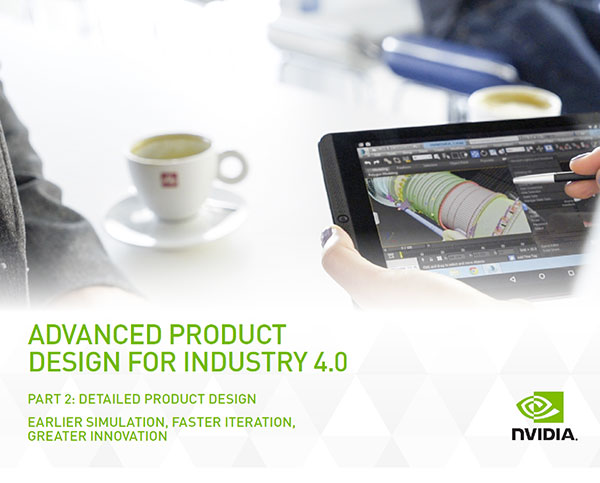Detailed Design Reinvented by Graphical Computing
A re-engineering of design workflows is underway as visualization and simulation move into product development's earliest phases.

Advances in graphical computing technologies have enabled companies to reinvent their advanced product development workflows and processes while simultaneously shortening project timelines. Image courtesy of NVIDIA Corp.
Latest News
February 7, 2019
Dear DE Reader:
Good planning once meant that you'd start a simulation or visualization job before you went to a meeting or home for the night. It may well still be if your workstation is, say, four years old. Detailed design, particularly simulation and visualization, is a complex, time-intensive business. But within the last three years, advances in GPUs (graphics processing units) and related technologies have changed that picture.

The paper “Advanced Product Design for Industry 4.0, Part 2: Detailed Product Design” is the second installment of a four-part series exploring the rapidly changing technologies for product development. (Read part 1 here.) Developed by NVIDIA, this paper homes in on the capabilities found in new-generation GPUs and the potential they offer users leveraging such technologies as artificial intelligence (AI), generative design, photorealistic rendering and virtual reality.
In “Part 2: Detailed Design,” the heart of the matter is that the productivity and performance of the modern GPU-CPU combination, whether in a workstation, a cluster, a mobile device or through cloud hosting enables engineering and manufacturing companies to reinvent their advanced product development workflows and processes. Additionally, they’re resetting project timeline expectations for faster development cycles.
This paper focuses on how these processes for design simulation and design visualization jobs can be reinvented. Fast, scalable physics-based GPU-accelerated physically based rendering is key here. It provides the speed with which users can interactively adjust, say, realistic materials or boundary parameters then visualize early-stage prototype designs and validate or reject the tweaks in near real time. It's the game changer on a number of levels such as rapid decision-making and cross-disciplinary collaboration.
A strength of this paper is that it's neither a peppy brochure nor a teeth-breaking technical grind. What it does best is explain key GPU technologies you often read about, say, AI-driven denoising, and tells you how it operates in digestible terms for the user rather than the programmer. It links a given technology to the role it performs in product development. It frequently cites the visualization capabilities of many widely deployed CAD and analysis solutions supporting the technology. Quotes from users in the real world, cool images and breakout sidebars enhance the discussion throughout.
“Advanced Product Design for Industry 4.0, Part 2: Detailed Product Design” is an engaging, informative read. If you've wondered what the new generation of GPUs means for design and simulation, this is for you. Hit today's link for your copy.
Thanks, Pal. – Lockwood
Anthony J. Lockwood
Editor at Large, DE
More NVIDIA Coverage
Subscribe to our FREE magazine, FREE email newsletters or both!
Latest News
About the Author
Anthony J. Lockwood is Digital Engineering’s founding editor. He is now retired. Contact him via [email protected].
Follow DE





